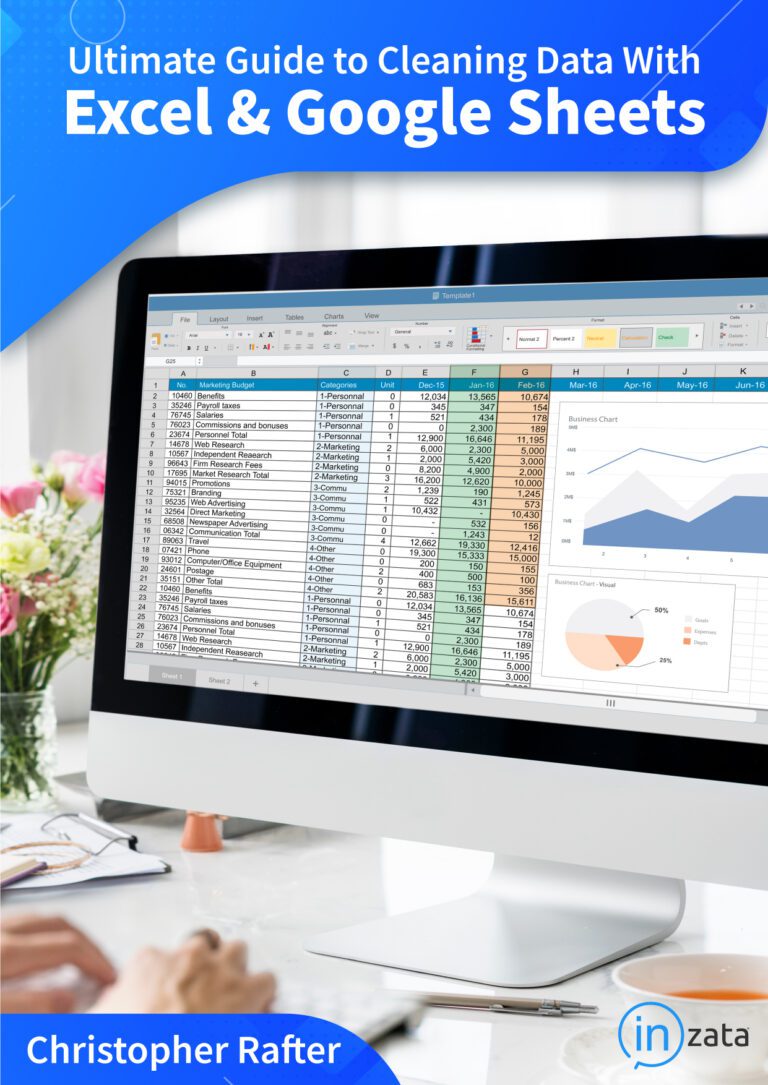Mastering techniques around Insurance data analytics, knowing what data to get, and how to analyze it, greatly streamlines many of the most expensive insurance business processes.
“The United States is the world’s largest single-country insurance market. It writes more than $1 trillion in net insurance premiums every year. In emerging markets, China continues to be the growth engine.
All together, the global insurance market writes over $5 trillion in net insurance premiums per year.”
–Insurance Journal
Despite its size and global reach, the insurance business model has always been about two things.
- Maximizing the premiums received
- Minimizing the risk of your portfolio
Beneath these two top goals are a myriad of activities every insurance company has to master, including:
- Reducing risk
- Reducing fraud
- Keeping customers happy with great service
- Finding new customers with favorable risk profiles
Insurance fraud alone costs the insurance industry more than $80 billion per year. In an effort to overcome fraud, waste, and abuse, many companies are turning to insurance data analytics.
The staggering level of criminality costs us all, adding $400 to $700 a year to premiums we pay for our homes, cars, and healthcare, the feds say. There are simply not enough investigators to put a significant dent in the criminality, so the industry is turning to the machines.
Reducing Risk & Improving Customer Service
The insurance industry definitely has plenty of data. A single claim could have dozens of demographic or firmographic data points to analyze and interpret. A single policy could have dozens of individual attributes depending on what is being insured. Data enrichment, which has become more and more popular, can increase these data points into the thousands.
However, as insurance companies succeed and grow, datasets become increasingly large and complex. Often these are locked inside massive policy and claims management systems which do a great job of storing and maintaining the data. These do a great job for looking up individual policy records and claims, and of course, handle billing and renewals quite well.
When multiplied across an organization’s entire book of business, data sets become so large that legacy, on-premises systems are unable to keep pace with data volume, variety and velocity.
But what else could insurance companies be doing with All. That. Data?
We know when data is looked at in aggregate, surprising and valuable insights begin to show themselves.
By contrast, cloud data warehouses working in concert with Data Analytics Software make it possible to ingest, integrate, and analyze limitless amounts of data, freeing up resources to automate these important business processes:
Mastering these techniques around insurance data analytics, knowing what data to get, and how to analyze it, greatly streamlines many of the most expensive insurance business processes.
Customer Quoting, Risk and Pricing Analysis: Life insurance companies harness analytics to provide customers an expedited application and quoting workflow.
Writing Life insurance used to require multi-step risk scoring and an in-person health screening for the customer with a physician. Now it’s done almost instantaneously through the secure analysis of an applicant’s digital health records.
Fraud Detection: Property insurers use data analytics to detect and mitigate fraudulent claims. Predict fraud events from available data before it happens with a predictive analytics platform. Using Machine learning powered historical fraudulent claim data to model your risk in real-time. Look for highly predictive factors that correlate to. In this scenario, past performance is indicative of future results.
Detecting High-Risk claimants: Other algorithms can proactively monitor your portfolio and identify high risk claimants on a recurring basis, over time. After all, most claimant risk is only assessed once – when the policy is first written. However we know, financial circumstances change, properties age, vehicles require repair. Pulling together all obtainable data – policyholder financial and employment status, vehicle repair log, etc. tells companies what’s happening right now and what is likely to will happen next. This reduces manual effort and increases the effectiveness of fraud detection processes.
In about one third of cases, claims can be approved and paid out essentially instantly on approval by the company’s algorithms, he says. Even if a human is involved, it’s radically quicker. It becomes just a quick check to confirm the algorithm’s recommendation, instead of a deep analysis.
Source: Fast Company
Provider Abuse Prevention: Medicare and Medicaid make up approximately 37 percent of all healthcare spending in the United States. (according to the Centers for Medicare & Medicaid Services.) This adds up to over $1 trillion of government-subsidized hospital, physician and clinical care, drugs, and lab tests.
At these levels, the potential for waste and sometimes abusive billing by providers and health systems is always present. Program administrators and companies contracted by Medicare and Medicaid increasingly rely on insurance data analytics to combat this. This lets them identify patterns and outliers to thwart unethical billing.
Real-time Lead Scoring: New customers are the lifeblood of insurance growth. And never before have consumers and business customers had so many options and choices for insurance.
Predictive lead scoring sifts through inbound channels and optimizes leads by value and priority. Insurance Lead Scoring tools help select the best prospects with the most favorable risk profiles. Predictive lead scoring also tells insurers and brokers the best ways and times to contact prospects.
Behavioral analysis can predict whether a prospect is just shopping around or truly ready to buy. It also identifies the best method of contact for those prospects based on demographic profiling. Some prospects will appreciate a prompt phone call. Some prefer to come to a branch office. A fast growing group prefers typing over talking and responds better to a digital exchange (text messages, web and mobile apps.) Meeting the needs of these diverse audiences is the key to acquiring the best new prospects. This type of advanced profiling lets insurers predict the best methods and timing for prospect communications, and increases close and policy writing rates.
How Big Data Analytics Software in a Cloud Data Warehouse Accelerates Insurance Analytics
Unlike on-premises systems that don’t easily scale, a complete analytics platform featuring a cloud data warehouse, such as Inzata data analytics software, enables organizations to keep pace with the growing demand for insurance data by delivering:
Rapid time-to-value: Realize the power of real-time analytics to supercharge your business agility and responsiveness. Answer complex questions in seconds; ingest and enrich diverse data sources at cloud-speed. Turn virtually any raw, unrefined data into actionable information and beautiful data visualization faster than ever before, all on a single platform.
Rapid ingest of new data sources with AI:
- Got a hot new leads file?
- Just found out a new way to tell which vehicles will have the lowest claims this year?
Instantly add and integrate new sources to your dataset with Inzata’s powerful AI data integration. Integrating new data sources and synthesizing new columns and values on the fly can enhance an organization’s decision-making but doing so also increases the company’s data storage requirements.
The Power of Real-Time Performance: Your insights and queries are more most valuable if they get to you in time. In a competitive market where leads convert or abandon in seconds, having the speediest insights makes a huge difference. Inzata’s real-time capabilities and support for connecting to streaming data sources for analysis means you always have the most up-to-the minute information.
Make data even more valuable with Data Enrichment (One-Click-EnrichmentsTM): Enrich and improve the value and accuracy of your data with dozens of free data enrichment datasets – all within a single, secure platform.
Inzata offers more than 40 enrichments include: Geo-spatial, Advanced Consumer and Place Demographics, Political Data overlays, Weather data, and Healthcare Diagnosis Codes. Plus more than 200 API connectors to bring in data from web and cloud sources.
Security and Compliance: Cloud data warehouses can provide greater security and compliance than on-premises systems. Inzata is available with HIPAA compliance and PCI DSS certification and maintains security compliance and attestations including SOC 2, Type 1 and 2.
Real-time Data Sharing:Secure and governed, account-to-account data sharing in real time reduces unnecessary data exports while delivering data for analysis and risk scoring.
Harness the Power of Insurance Data Analytics
As insurance evolves into an even more data-driven industry, business processes that used to take hours and days are going to be compressed down to seconds. Companies who properly anticipate these changes will reap the benefits in the form of more customers, higher profits and greater market share.
Inzata is an ideal platform for insurers to take the step toward real-time, AI powere analytics that will shape the industry for decades to come.








